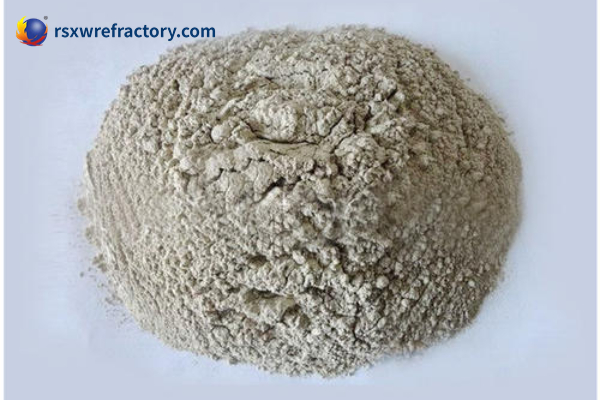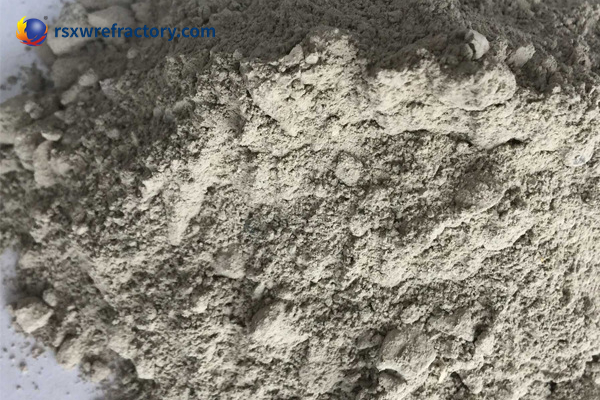Refractory clay is called fire clay for short. Esistono due specifiche della malta refrattaria, bagged and barreled. It is used for laying refractory bricks. The material matches the bricks to be laid. It is recommended that the material content of the mortar is higher than that of the bricks, which will be more wear-resistant and have a longer life.

Ratio of refractory clay
① The raw materials for preparing the mortar for clay bricks and high-alumina bricks are high-grade cement or high-alumina cement (refractory cement) above No. 425 and refractory clay. When laying high-alumina bricks, the content of Al2O3 is >40%; when laying clay bricks, it is 20% A 40%. The ratio of the two is 1:2 O 1:3. Add water and stir (the ratio of water to refractory clay is about 0.7:1), and mix it into a thick paste without lumps. If a water glass is used instead of water, the effect will be better. Before mixing, the water glass is diluted with water in a ratio of 1:1, and then mixed with cement and refractory clay to form refractory mortar.
② Iron-magnesium mortar is used for laying magnesia refractory bricks. The material is prepared according to 5% A 6% of the mass of refractory bricks; when laying magnesia bricks, it is prepared according to 8% A 10%. The diameter of the magnesia fine material used is less than 1mm;
③ Phosphate refractory mortar is used to build phosphate refractory bricks or phosphate wear-resistant refractory bricks. The mortar should be mixed with industrial phosphoric acid with a concentration of t>85% as a mixing agent.
④ The mixing ratio of refractory mortar for insulating refractory bricks is diatomaceous earth or refractory clay
Precautions in the use of high temperature fire clay
Refractory mud is a new type of inorganic cementing material made by adding inorganic binders to the powder of the same material according to the material and use temperature requirements of the bricks to be built. It is divided into four grades of 1300, 1400, 1500 E 1700. It is suitable for kiln masonry that requires small mortar joints, good sealing and high bonding strength.

- When repairing the furnace, if the cracks are too large, 2-3mm refractory particles can be appropriately added to the high-temperature refractory mortar, mixed and used to fill the gaps, shortening the repair time and ensuring normal production.
- It can be applied to various furnace bodies. Before applying, there should be no dust or debris on the surface of the furnace body. Especially when constructing on old furnaces, slag wax and other dirt should be removed.
- It can be applied manually or mechanically, with a general thickness of 2-3mm. It cannot be constructed due to being too dry during use. It can be mixed with water in an appropriate amount.
- High-temperature refractory mortar must be strictly prevented from mixing with other materials, especially cement, lime and other items.
 Gruppo Rongsheng
Gruppo Rongsheng

WeChat
Scansiona il codice QR con wechat